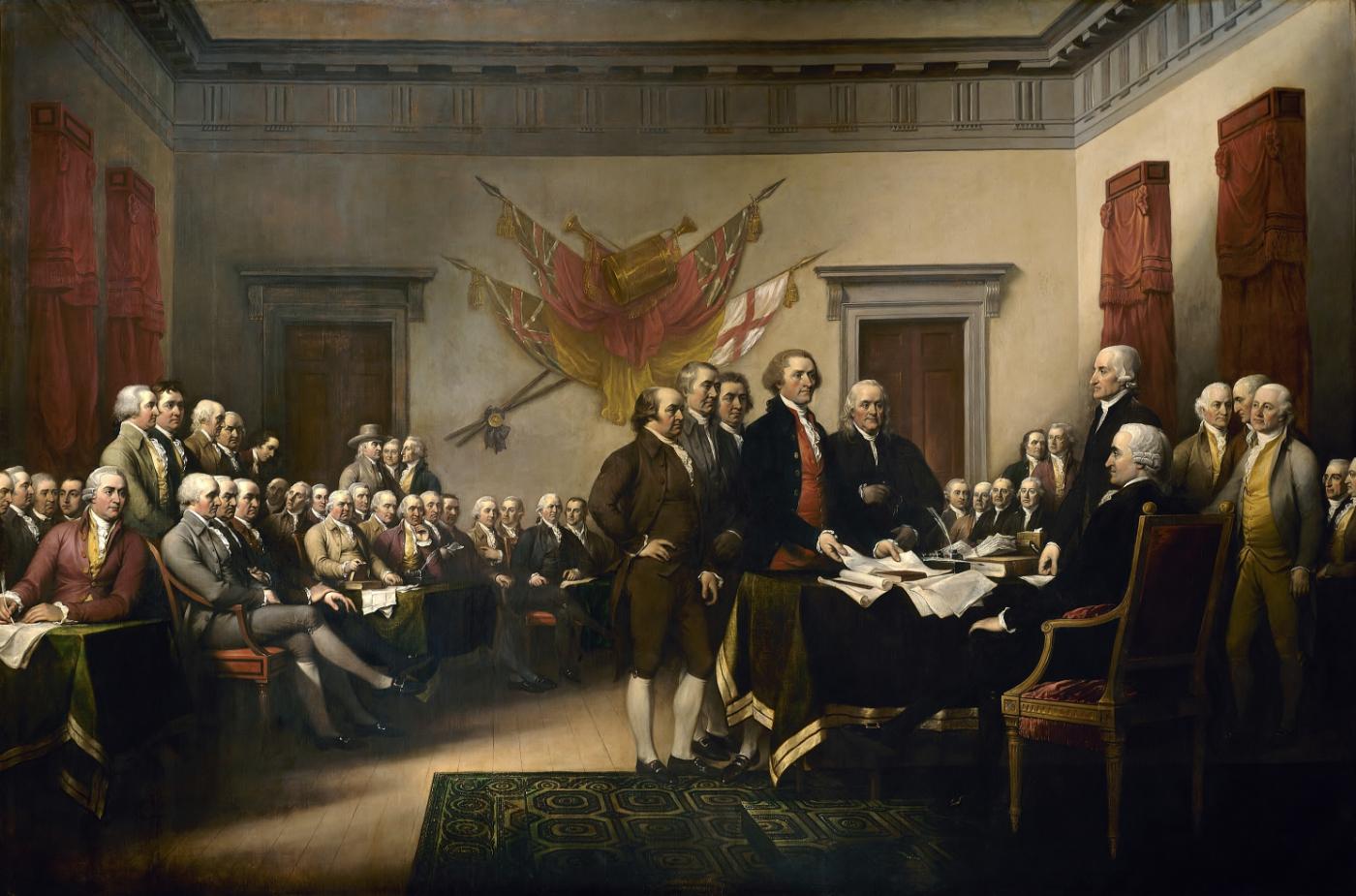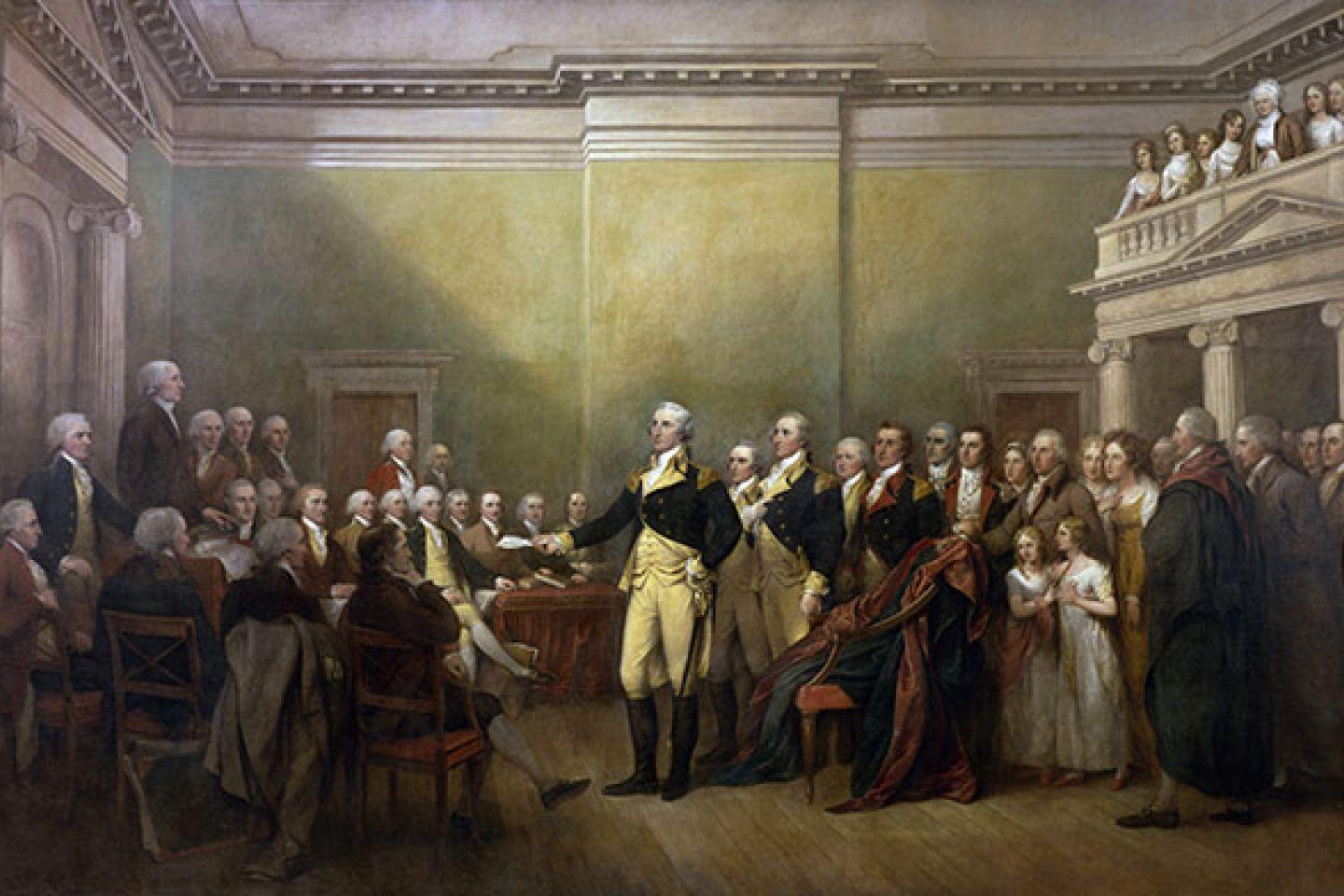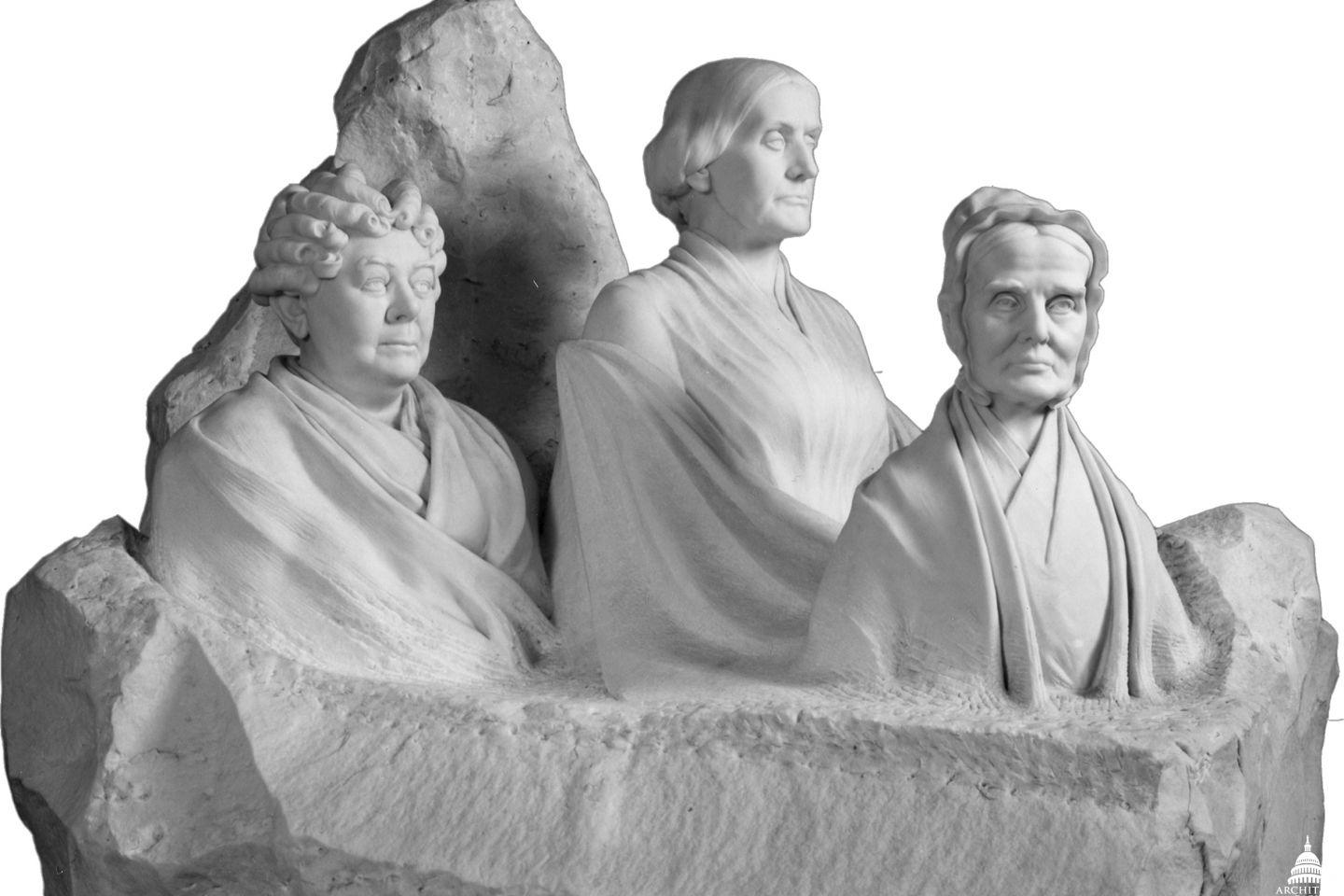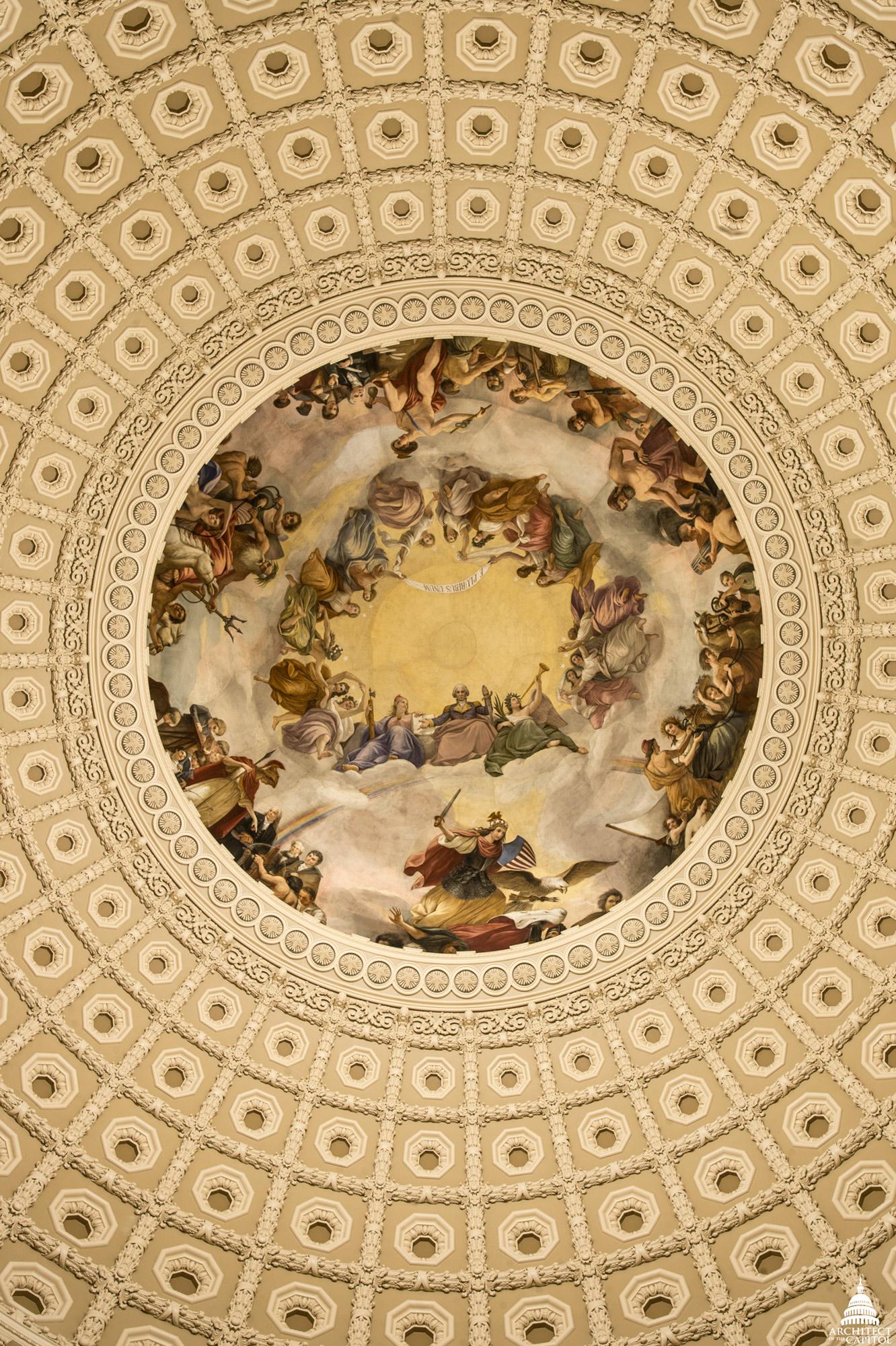At twelve by eighteen feet, the eight paintings hanging in the Rotunda towered over the action below, watching the unprecedented events of January 6. Four canvases by John Trumbull, commissioned by Congress in 1817 and placed in the Rotunda between 1819 and 1824, depict the revolutionary period: Declaration of Independence, Surrender of General Burgoyne, Surrender of Lord Cornwallis, and General George Washington Resigning his Commission. Between 1840 and 1855 four scenes showing early exploration were added to the Rotunda: Landing of Columbus by John Vanderlyn (1847), Discovery of the Mississippi by William Powell (1855), Baptism of Pocahontas by John Chapman (1840), Embarkation of the Pilgrims by Robert Weir (1843).

John Trumbull, Declaration of Independence, 1826. Oil on canvas.
As a shocked nation and world watched the violent scenes unfold at the US Capitol last week, art lovers and conservators paid special notice to the backdrop of many of these scenes: the historic paintings and sculptures that line the walls of the Rotunda. As rioters overtook the building, many doors and windows were damaged, but thankfully, it appears that the art and building itself were unscathed.

John Trumbull, General George Washington Resigning His Commission, 1826. Oil on canvas.

Adelaide Johnson, Portrait Monument to Lucretia Mott, Elizabeth Cady Stanton and Susan B. Anthony, 1920. Marble.
The nearby National Statuary Hall houses thirty-five busts and statues honoring presidents and important historical figures. While those smaller objects may seem like easier targets, they were undamaged, save for a bust of Zachary Taylor that was apparently smattered with blood.

Constantino Brumidi, Apotheosis of Washington, 1865.
Forty-eight feet above the floor and far out of reach was the stunning fresco The Apotheosis of Washington, painted by Constantino Brumidi in 1865. Showing George Washington flanked by Liberty, Victory, Science, War and other allegorical figures, some fifteen-feet tall, serenely looked down on the chaos below.
Conservators and preservationists have thankfully found little damage to this works, despite the chaos of the scene. In an interview with the New York Times, former director of policy development for the National Trust for Historic Preservation Anthony Veerkamp suggested that some of the physical damage be left unrepaired, “as a reminder that our monuments, our institutions, and our values are all vulnerable, and must be constantly cared for.”
For now, the lovers of art and its care-takers have breathed a sigh of relief. Meanwhile, the nation reckons with and begins to move on from these stunning events, having narrowly avoided a much greater toll on human life and treasured American property.
























